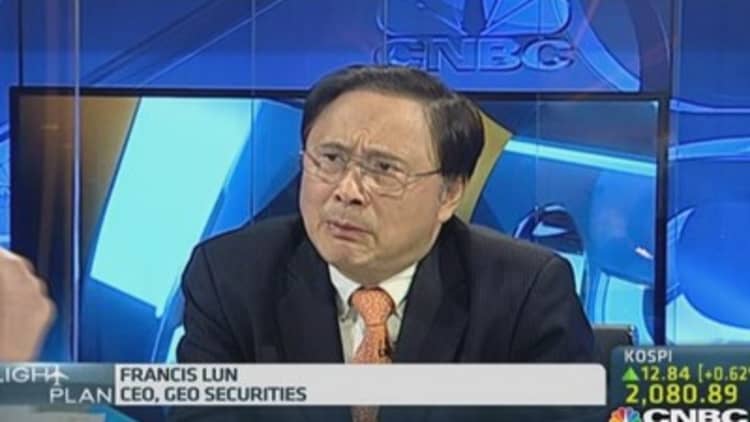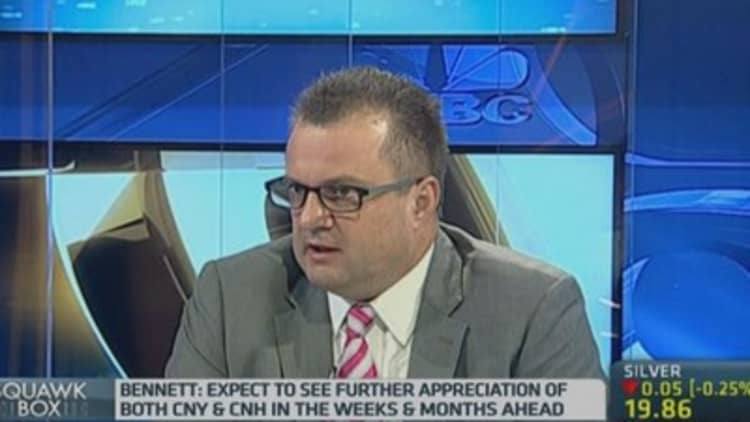China's renminbi hit a six-month peak this week, extending a rally that it began in May following a sharp selloff earlier this year.
The currency gained 2 percent against the greenback since hitting a 19-month trough of 6.2669 on April 30. While the yuan remains down over 1 percent year-to-date, experts say it has more room to appreciate as long as the People's Bank of China refrains from intervening.
"Obviously, the yuan won't be totally immune to dollar strength, but for now, it seems that strong [economic] fundamentals are dominating. We've seen the dollar index rising strongly but that hasn't translated to weakness for the renminbi yet," said Khoon Goh, senior foreign exchange strategist at Australia New Zealand Bank.
Read MoreHas China done enough to placate yuan detractors?
"Since May, the People's Bank of China has stepped away from markets. Because of their quietness, investors have been focusing on foreign-direct investment, the country's strong trade balance and portfolio flows," Goh said.

The central bank controls the yuan through a daily fixing and a trading band. In March, the central bank widened the trading band, allowing the yuan to rise or fall 2 percent from its daily fixing from 1 percent previously. In April, it punished speculators in by weakening the currency to curb hot money inflows.
So far, the yuan's rebound hasn't impacted China's trade surplus, which nearly tripled from the previous year to $47.3 billion in July.
"You could say that the yuan is offering a degree of safety for investors. It has an element of a safe-haven as it continues to find support among a structural surplus," said Greg Gibbs, foreign exchange strategist at the Royal Bank of Scotland (RBS).
Read MoreUK, Germany battle to be Chinese yuan trading hubs
Gibbs also noted that the currency has seen strong capital flows recently with equity markets performing better. Shanghai's benchmark rose to 14-month highs this week, on track for its best weekly performance in a year after data on Wednesday showed the services sector expanded at its fastest pace in 17 months.

Global investors remain broadly underweight on the yuan due to capital account restrictions, but are increasingly gaining exposure through the Renminbi Qualified Foreign Institutional Investor (RQFII) program, a program launched in 2011 to buy and sell yuan-denominated A-shares in mainland stock exchanges.
The yuan's appreciation has led many to invest in dim sum bonds – renminbi-denominated bonds issued outside of China.
Read MoreChina's yuan global ambition faces payments hurdle
"The CNY and CNH spots recovered more than half of the value lost earlier this year despite range-bound fixings. This enhanced investor confidence towards Dim Sum bonds. Along with limited supply in August (only a few private placements), the capital gain rebounded to a 4-month high, lifting the year-to-date total return to 2.64 percent (in RMB) and 1.09 percent (in USD)," said analysts at HSBC in a report.
In the near term, ANZ's Goh says there's a good chance the yuan could jump to 6.12. However, volatility in the fourth quarter, which is when ANZ expects the Federal Reserve to finish tapering its bond-buying program, could see the currency close out the year at 6.15.

